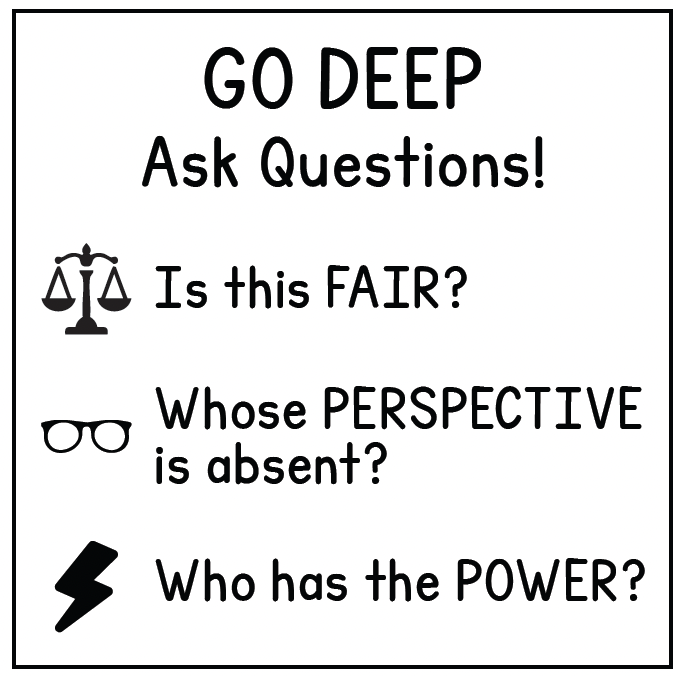How to Teach Inferring in Narrative II: Strategies That Help Students Explore Theme
October 13, 2025
Good stories, those that become our favorites, those we love to re-read, have layers of meanings. Some are readily apparent, but others are harder to discover. These deeper layers often reveal the theme—a word, a phrase, or a statement that when woven together across the narrative convey a story’s deeper message, revealing why the author wrote the story and what they hope the reader will take away. Teasing out theme requires students to go beyond the plot, to read between the lines, to think off page.
Why understanding theme is important—what does the research say?
When students explore the theme of a story, they have a richer, deeper reading experience. It requires them to not only look for clues in the text but also to draw from their own life experiences and identities. It requires imagination, the ability to think abstractly, and an awareness of what to look for.[1] Furthermore, when students go beyond the storyline to truly understand a story’s theme, their reading experience expands, allowing them to clarify their thinking, question their beliefs, and make sense of their world.[2]
In books for beginning readers, themes are typically more readily accessible. As students move to more challenging texts, themes become more complex, multifaceted, involved, and nuanced.[3] Early on, readers may be exploring universal morals. Later, students are more likely to be identifying symbolism. Whether they are beginning or more advanced readers, all students need strategies to help the uncover the deeper meanings in the stories they read.
Do my students need strategies on inferring about theme?
As students read a narrative text, ask questions that help you determine if they are thinking about the deeper meaning beyond the plot. Can they identify a lesson they learned while reading a story? Are they able to extrapolate lessons about their lives and their world? Can they point to any social issues or topics that add a deeper layer to the story? Are they able to spot examples of symbolism and discuss how those symbols reflect the theme? If your students can’t yet answer these questions, then you may want to explicitly teach strategies that help them build the skills they need to more easily identify and interpret themes.
How do I know which strategies to teach?
The best way to determine which strategies will move your students from where they are to the next level is to use a skill progression to guide your selection. For instance, if your students are just beginning to study theme and differentiate it from plot, you’ll want to use strategies at the beginning of the skill progression. Whereas, if your students can infer and express multiple themes based on different plotlines, story arcs, points of view, then they are ready to explore symbols and motifs that connect to the theme.
Let’s look at a couple of strategies, one at the beginning and one near the end of the skill progression.
Beginning Strategy: Notice When Wise Characters Teach
Skill Progression: Can understand the literal storyline and is ready to infer a lesson.
Skills: Inferring | Determining Importance
Strategy: Look for a place in the story where a secondary character (often one who is older or wiser) gives advice to the main character. Decide what the older/wiser character is trying to teach the main character and state it in your own words.
Prompts:
Who in this story is older or wiser than the main character?
Does anyone in this story advise another character?
What lesson do you think the older/wiser character is trying to teach?
Why is this lesson important for the main character to learn?
Did you learn a lesson from the older/wiser character?
Advanced Strategy: React to What’s Unfair
Skill Progression: Can infer theme(s) as a single word or phrase, is ready to elaborate with statements.
Skills: Inferring | Determining Importance | Synthesizing
Strategy: Identify moments where what is happening to a character seems unfair, and ask yourself, “Why do I feel this way? Who am I upset with? What is the problem? Now relate your answer to and expand upon the theme(s).
Prompts:
Are there unfair moments, actions, events in the story?
What do you think about this issue?
How does this issue further your understanding of the theme?
Strategies provide students with a doable step-by-step process that allows students to actively visualize ways to explore and understand theme. With use, the strategies become automatic, and students apply them with ease, allowing them to infer meaning beyond the literal interpretation of the text.
For more strategies to help students comprehend characters, check out The Reading Strategies Book 2.0. These strategies will help students not only become better readers, but better able to understand abstract ideas and universal truths and how both impact their lives.
Download your own set of reproducible student cards designed to help students be independent with each strategy.
References:
[1] Seifert, C.M., Dyer, M.G., & Black, J.B. (1986). Thematic knowledge in story understanding. Text: Interdisciplinary Journal for the Study of Discourse, 6(4), 393–426.
[2] Dimino, J., Gersten, R., Carnine, D., & Blake, G. (1990). Story grammar: An approach for promoting at-risk secondary students’ comprehension of literature. The Elementary School Journal, 91(1), 19–32.
[3] Applebee, M.D., Langer, J.A., & Mullins, I.V.S. (1987). Learning to be literate in America: Reading, writing, and reasoning. National Assessment of Educational Progress, Educational Testing Service.
Sweet, A.P., & Snow, C.E. (Eds.). (2203). Rethinking reading comprehension. Guilford.



